MAISON MAUMEJEAN
- WGP Advisors

- Apr 5, 2024
- 4 min read

Maison Maumejean dates back to 1860, when Jules Pierre Maumejean, at the age of 23, established his first workshop in Pau (France) at 14-16 Montpensier Street. in the house of the Count of Barraute.
An advertisement for this first workshop read like this:
“Manufacture of stained glass for churches and oratories, Supply of canvas paintings, banners.”
His father Joseph and his maternal grandfather, Jacques Dufau, were faience painters, so it is not surprising that their son became a skilled glass painter.

Jules Pierre Maumejean married Marie Honorine Lalanne and they had five children.
Joseph (Joseph Jules Maumejean).
Henri (Jean Siméon Henri Maumejean).
Léon (Léon Ernest Thomas Maumejean).
Marie (Marie Thérèse Gabrielle Blanche Maumejean).
Cari (Charles Emile Joseph Maumejean).
All the men continued their father's artistic career and very soon became skilled glass painters. However, Joseph, Henri and Cari worked collaboratively, while Léon remained independent in Paris, where he died in 1921.
In 1884, Jules and Marie bought land in Pau to build a villa called "Los Vidrieros", located on Albert Piche Street.
In 1890, Jules Pierre Maumejean set up a workshop in Anglet, villa Anna, in the Sept-Cantons neighborhood, moving it to Biarritz in 1893, to the villa Manzon, at 31 rue de España and rue de la Croix des Champs, later Avenida de la República. He died in 1909.
Jules' workshops supplied stained glass to a good number of religious and civil buildings and private homes, such as the Bayonne Cathedral, or the Biarritz Town Hall. His contacts with Madrid circles provided him with numerous commissions and led him to become the official glass painter of the Royal House of Alfonso XII.
Joseph, known as José Maumejean, the first-born of the family, and disciple of Jean Baptiste Anglade (a master glassmaker born in Eauza, capital of the Gers region and a contemporary of his father Jules Maumejean) spent frequent stays in Madrid, not only to control its different workshops, but also to attract new clients.
There he met Augustine Jeanne Pastora Vic, daughter of Joseph Julien Vic, a native of Henadaya, then general agent of Saint-Gobain Stained Glass in the Spanish capital.
Two children were born from this marriage:
Marie Augustine Martine and Georges Henri, the latter becoming an excellent painter on glass alongside his father, continuing his solo career.
Years later, in 1928, Joseph Maumejean remarried the daughter of the doctor from Pau, Paule Gabrielle de Chluda.
As a result of this union with Marie, Joseph created a new Maumejean workshop in Madrid in 1898, at 39 Abascal Street, Watteler House, later moving to 64 Paseo de la Castellana.
Some years later, in 1908, the Maumejean Brothers opened branches in Barcelona, at Rambla de Cataluña, nº 21, then in San Sebastián, at Pedro de España street, nº 8.
This last workshop specialized in mosaics, a technique in the one that Charles stood out above all in the Parisian establishment.
Workshops that will be grouped in the S.A. Maumejean Hermanos, based in Madrid.
In Paris, the Maumejean Brothers created a new workshop at 6 Bézoutm Street and 6 bis, in the fourteenth arrondissement, registered in 1921 as a workshop for "Mosaics-enamels of Venice", establishing itself two years later as a Society.
Anonymous under the name "S.A. Maumejean", with headquarters in the same building. Shortly after, they opened another new workshop in Hendaye on Santiago Street, which would eventually have great commercial success.
During the Second World War and until 1941, Joseph Maumejean continued directing the Madrid workshop and traveled to Morocco to his daughter's house with the intention of establishing a new stained glass workshop there, but his advanced age did not allow him to complete the project.
Henri, who ran the Madrid workshop, died in 1932, leaving his brother José in charge, who died in 1952, five years later Cari, in Paris, died in 1957 and his son Georges in 1970.

Thus culminated the saga of the long Maumejean dynasty, stained glass artists who worked tirelessly for three consecutive generations, participating in numerous national and international exhibitions.
Standing out among the international ones is that of Madrid in 1894, that of Paris, of 1925 and 1937, that of Philadelphia and Pamplona of 1926, that of Milan and Madrid in 1927 or that of Seville of 1930.
The Maumejean workshops handled numerous orders, not only from France and Spain, where they were established, but also from the rest of Europe, Africa, Asia and America.
To finish this brief history of the Maumejean house, which covers a period of more than 150 years, and without fear of being wrong, we can affirm that Maumejean was one of the most important workshops that existed in Spain during the 20th century.
Their works were equally required to make new stained glass windows or restore existing ones, for a residential building, a public or religious building; rationalist, modernist, art deco, historicist, neo-renaissance or neo-baroque style

The creation of the stained glass, mostly with colored glass for the borders and colorless for the interior, some with texture, on which grisaille and fired enamel have been applied, was carried out in a mix of classical styles. and Art Nouveau, and was carried out by the Maumejean house, as can be seen in the lower right corner of one of the stained glass windows.

The circular stained glass window has a colorless glass base with a central geometric motif surrounded by very simple plant ties, while the oval window presents a decoration with plant motifs, equally simple, both in the center and in the corners. Both stained glass windows show the usual technique of fire-fixed grisaille and silver yellow, with a predominance of yellow and green. No signature appears, although given the similarity with the rest of the stained glass windows that we saw in The Mistress’s Palace, it is more than likely that they were made by the Maumejean house.

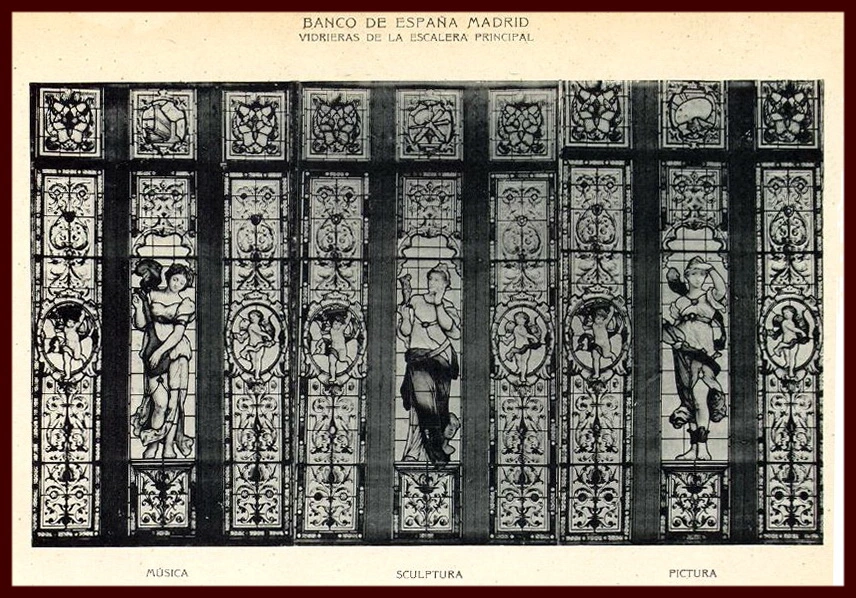

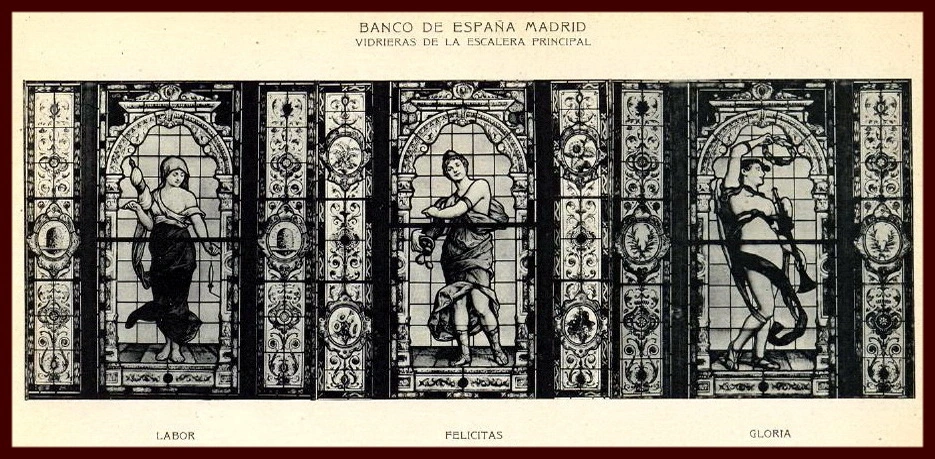

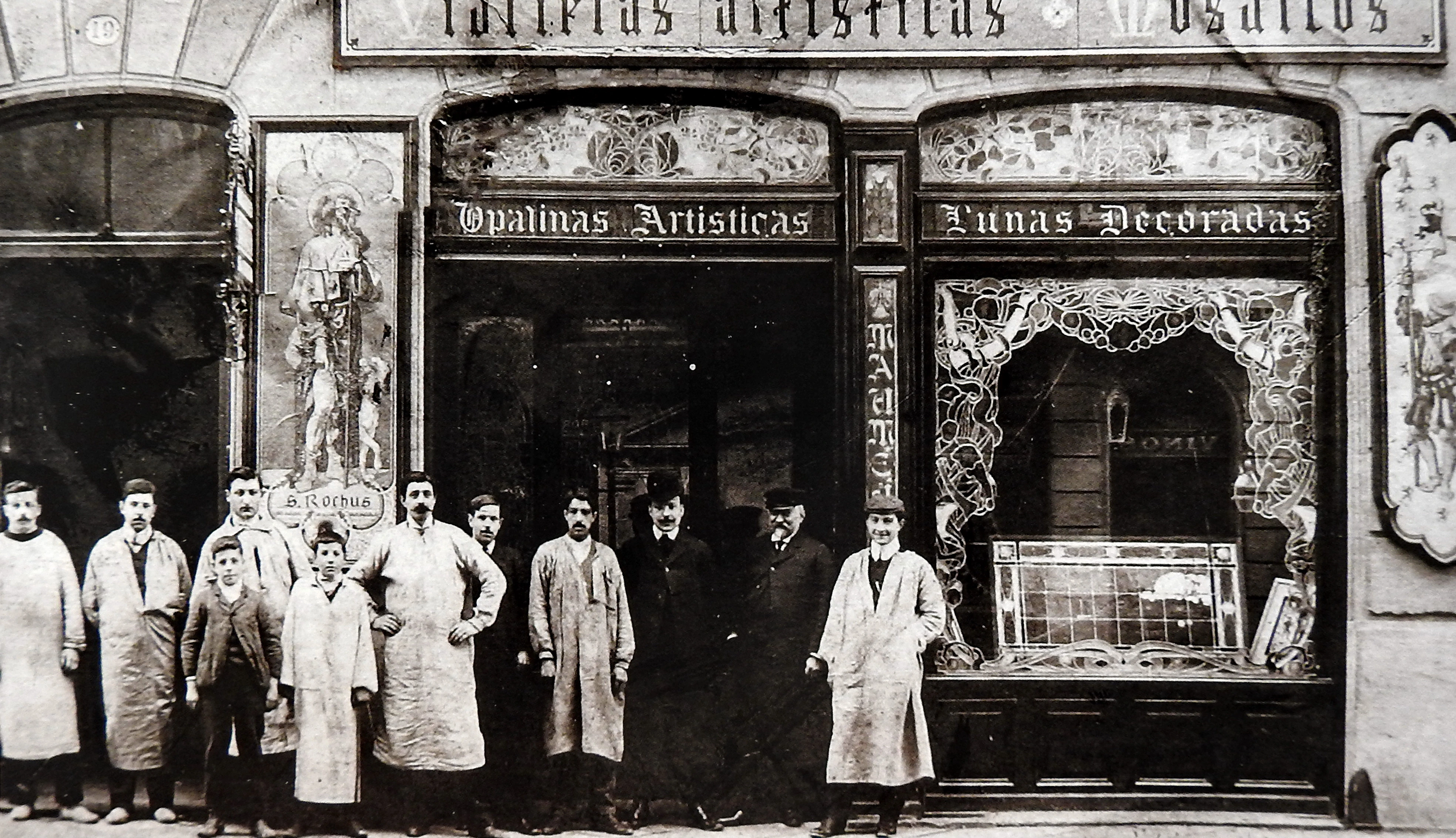
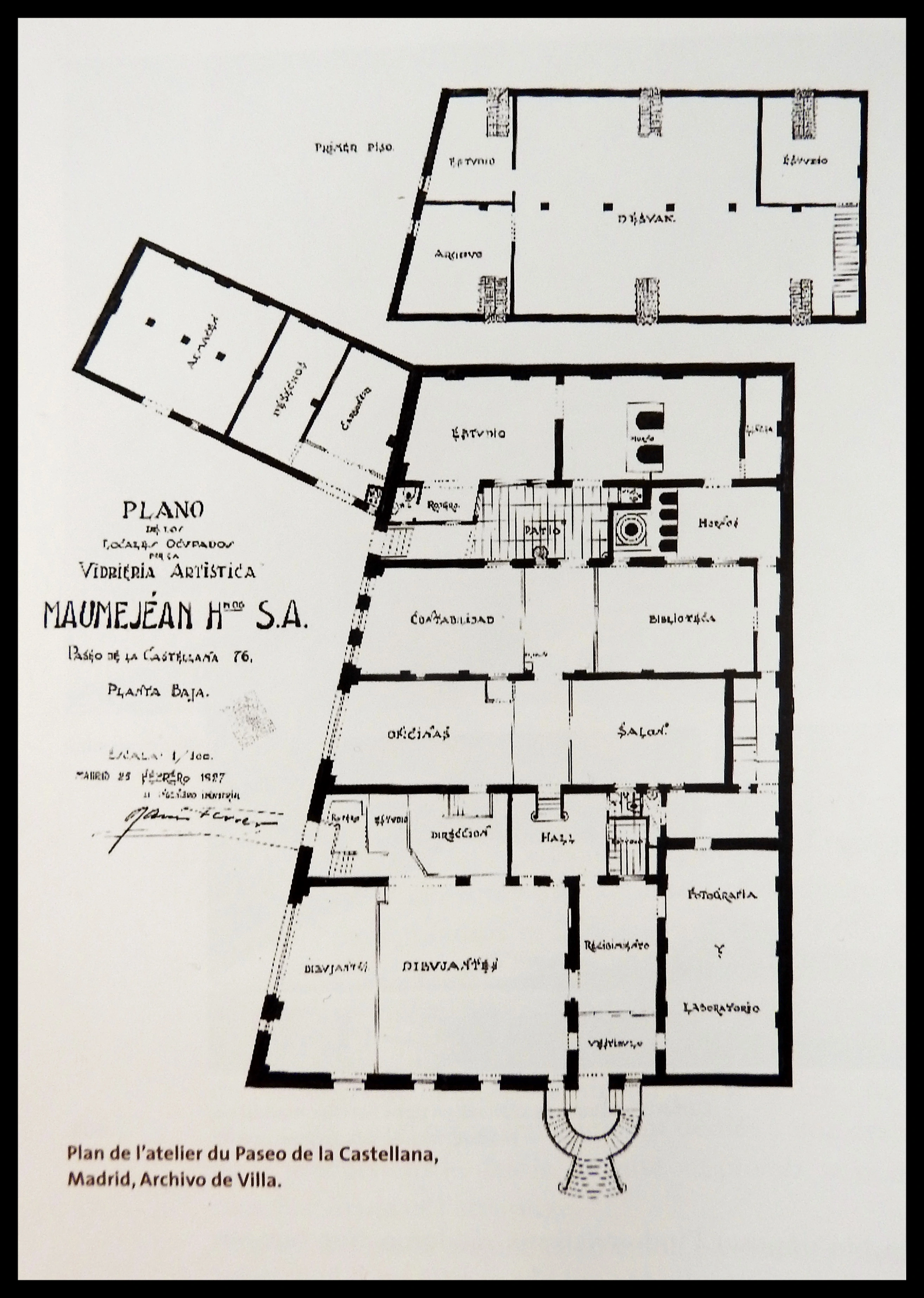
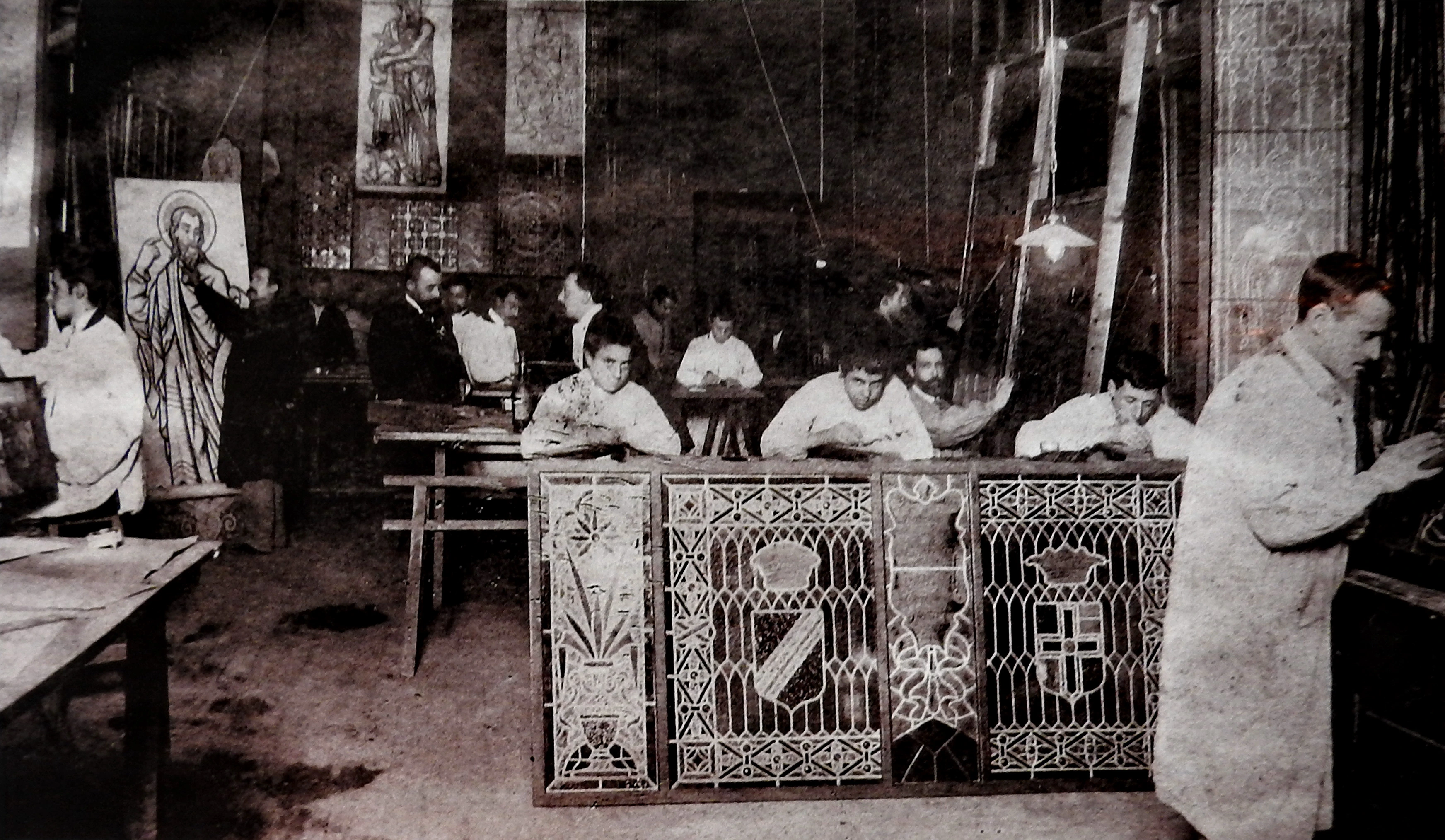


Comments